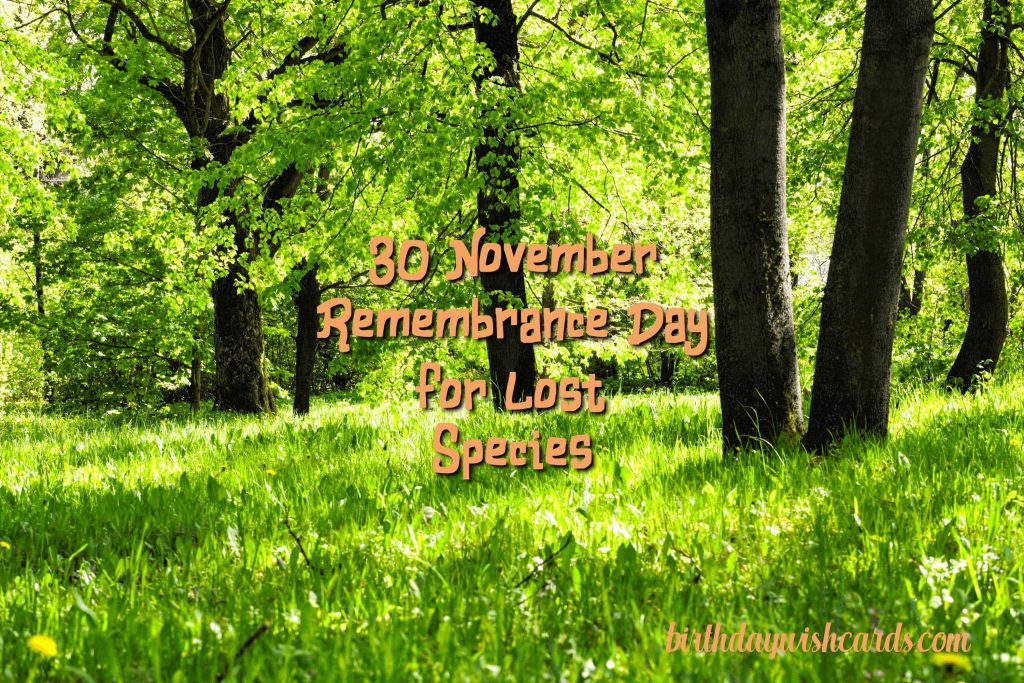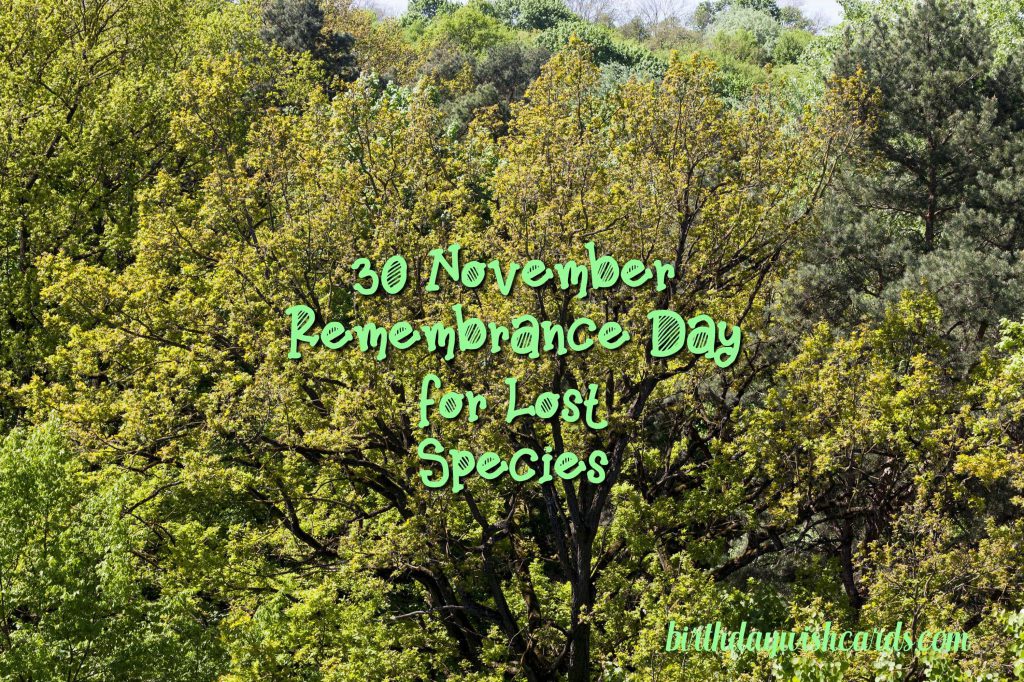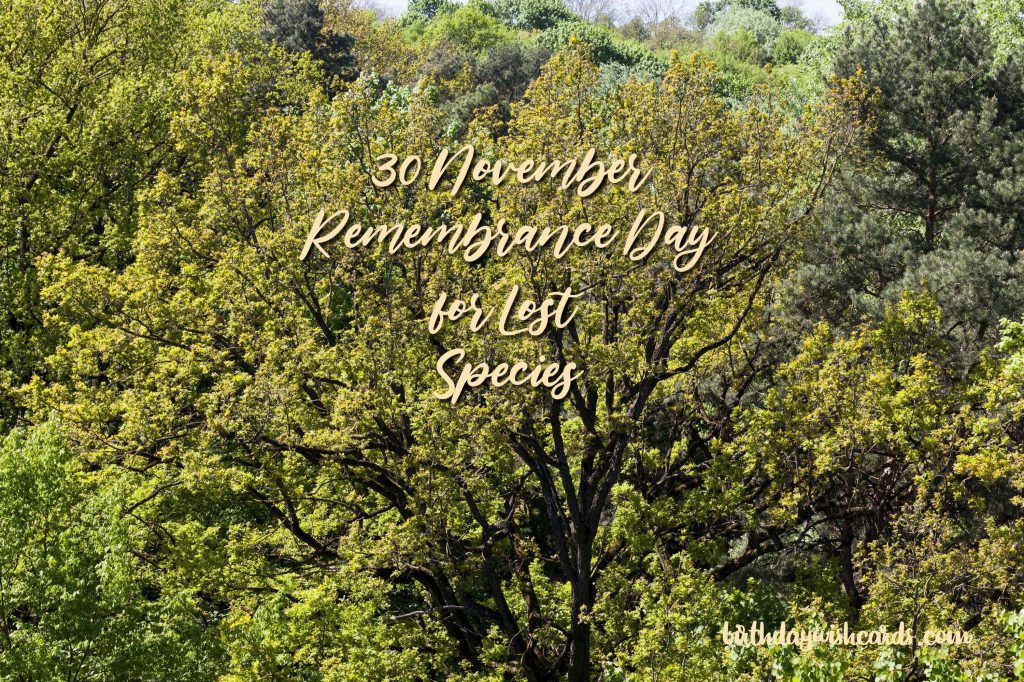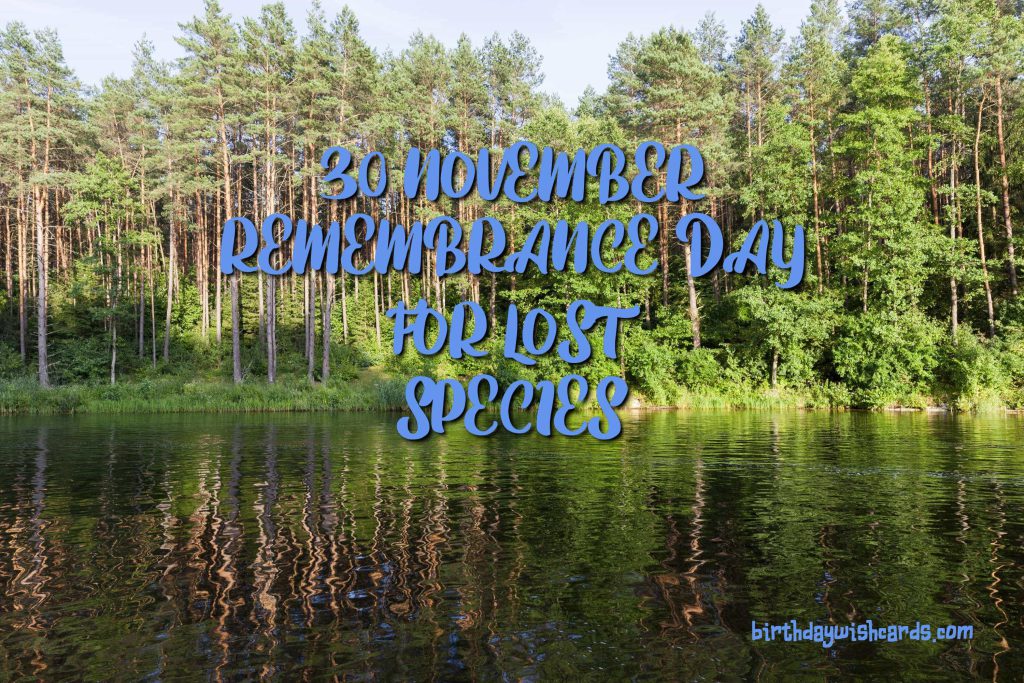
30 November: Remembrance Day for Lost Species
Origins: Feral Theatre and The Life Cairn
Remembrance Day for Lost Species was established in 2011 by Feral Theatre and The Life Cairn. Since its inception, the day has gained support from a diverse array of organizations and individuals worldwide. It remains a volunteer-led initiative without formal legal status, coordinated by dedicated volunteers and staff from ONCA (Orchid Network Community Arts) in the United Kingdom and Extinction Witness in the United States.
Observed annually on November 30th, Remembrance Day for Lost Species invites people to reflect on the stories of extinct and critically endangered species, as well as the cultures, lifeways, and ecological communities affected by their loss. The day draws attention to the deep connections between biodiversity loss and histories of violence and discrimination.
Participants are encouraged to make or renew commitments to the living world and to foster creative, practical solutions for conservation and ecological restoration. The day honors diverse narratives and practices for enduring and witnessing the loss of both cultural and biological diversity.
The Impact of Industrial Capitalism on Biodiversity
Industrial capitalism has been a major driver of biodiversity decline and the dramatic reduction of wild animal populations worldwide. Many scientists now agree that Earth is entering the early stages of a sixth mass extinction, marked by an unprecedented rate of species disappearance.
Remembrance Day for Lost Species was created in response to the alarming speed at which species are vanishing from both the planet and collective memory. The day provides a vital platform for research, reflection, and commemoration of extinctions, while also promoting recovery efforts to protect vulnerable species and ecosystems.
Events and Community Engagement
Over the past decade, communities around the world have organized a wide range of events on November 30th to honor extinct species and collectively process the grief and anxiety associated with ecological loss. Lost Species Day has evolved into a consciously anti-racist initiative, recognizing that environmental harms caused by colonialism and resource extraction have disproportionately impacted Indigenous and marginalized communities for centuries.
It is crucial that discussions about extinction consider broader cultural, ecological, historical, and political contexts. For example:
- If extinction or endangerment is linked to deforestation, it is important to consider the increased risks faced by forest-dependent communities, especially in the context of challenges like the COVID-19 pandemic and ongoing persecution.
- If an event marks the disappearance of a local bird species, it is vital to examine the underlying causes and to ask who is harmed and who benefits from these changes.
Isolating animals from their environmental and social contexts risks depoliticizing extinction and obscuring the complex relationships that sustain biodiversity. Remembrance Day for Lost Species encourages a holistic approach that acknowledges these interconnections.
How to Participate
Individuals and organizations can participate by organizing or attending memorial events, educational workshops, art exhibitions, or community discussions that raise awareness about endangered and extinct species. Many participants use creative methods such as storytelling, performance, and visual art to honor lost biodiversity and inspire action.
Ways to get involved include:
- Hosting a moment of silence or vigil to remember extinct species and the ecosystems they inhabited.
- Sharing stories and histories of species loss within local communities or online.
- Collaborating with Indigenous groups to highlight traditional ecological knowledge and conservation efforts.
- Supporting policies and initiatives that address the root causes of extinction, such as habitat destruction, climate change, and unsustainable resource extraction.
Images from Past Remembrance Day Celebrations
Visual art and photography play a powerful role in commemorating lost species and engaging the public emotionally. Below are images from previous Remembrance Day for Lost Species events:
Why Remembrance Day for Lost Species Matters
The accelerating loss of species and ecosystems threatens not only our natural heritage but also the health and well-being of human communities worldwide. By dedicating a day to remember and reflect on these losses, Remembrance Day for Lost Species seeks to:
- Raise public awareness about the global biodiversity crisis
- Foster empathy and connection with non-human life
- Encourage collective responsibility and action for conservation
- Highlight the importance of cultural diversity alongside biological diversity
- Promote equitable and inclusive approaches to environmental stewardship
In the face of ongoing ecological challenges, this day serves as a powerful reminder that extinction is not just a scientific fact but a human tragedy with profound ethical and political dimensions.
Further Resources
To learn more about biodiversity loss and extinction, consider exploring these authoritative resources:
- International Union for Conservation of Nature (IUCN) – The IUCN Red List provides a comprehensive inventory of the global conservation status of species.
- World Wildlife Fund (WWF) – A leading organization focused on wildlife conservation and the protection of endangered species worldwide.
By engaging with these organizations and supporting their efforts, individuals can contribute to a global movement to safeguard the planet’s remaining biodiversity for future generations.






